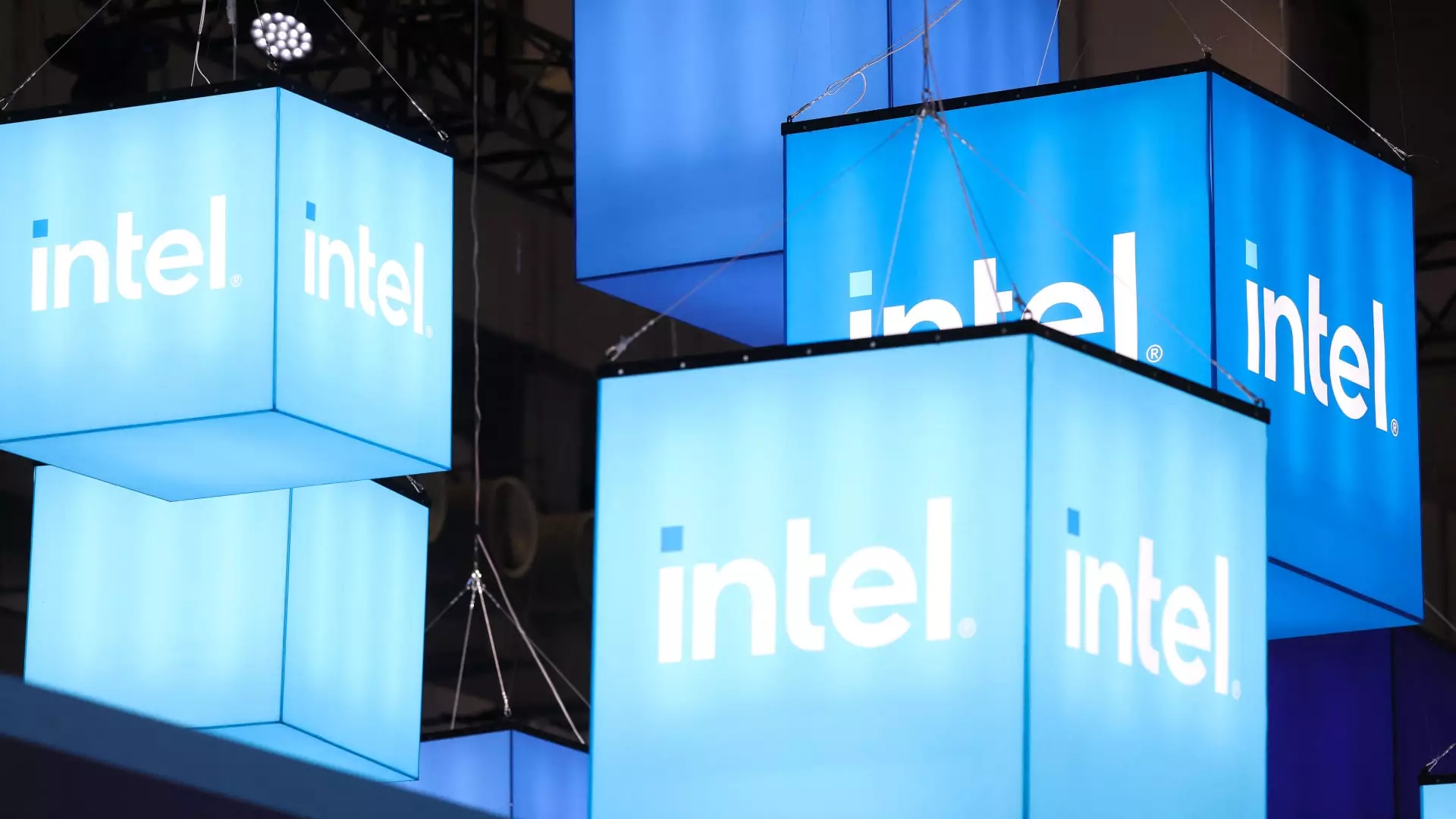In the ever-evolving landscape of semiconductor manufacturing, the recent interest of major competitors like Taiwan Semiconductor Manufacturing Co. (TSMC) and Broadcom in Intel’s operations signals a potential seismic shift. The renowned U.S. chipmaker is facing unprecedented scrutiny and possible fragmentation as rival companies explore the feasibility of acquiring and restructuring Intel’s valuable assets. This situation not only reflects the inherent volatility of the tech industry but raises fundamental questions about the future direction of American semiconductor production.
The report from the Wall Street Journal unveiled that Broadcom is closely evaluating Intel’s chip design and marketing sectors. Having conducted preliminary discussions regarding potential acquisition strategies with advisers, Broadcom’s path appears contingent upon securing a partner interested in Intel’s manufacturing capabilities. This wariness highlights a broader uncertainty within the semiconductor arena, as companies consider the implications of such a divestiture on their strategic positioning.
Simultaneously, TSMC, the titan of contract chip manufacturing, is contemplating a more direct approach—gaining control over Intel’s production facilities, potentially through an investment consortium. This bifurcation of interest indicates not only the competitive nature of the semiconductor industry but also the changing allegiances and partnerships that may emerge as companies vie for dominance. TSMC’s valuation—substantially higher than Intel’s—underscores its robust market position and capacity to influence global supply chains.
Intel’s Internal Dynamics: Leadership and Strategic Direction
Amidst these developments, Intel’s interim executive chairman, Frank Yeary, is positioned at the forefront of negotiations. His priority appears to be maximizing shareholder value amid a climate of uncertainty and declining stock performance. The pressure mounts as both Broadcom and TSMC embark on their exploratory maneuvers; the stakes involve not only the survival of Intel but also its pivotal role in U.S. national security, a matter of concern for the current administration.
Yeary’s engagement with potential investors reflects a reactive stance rather than a proactive strategy to stabilize the company. The whispers of interest from TSMC, underscored by governmental apprehension regarding foreign ownership of critical manufacturing facilities, complicate the landscape and display a troubling trend where Intel’s intrinsic value as an American icon is being reassessed by external entities.
The interaction of corporate ambitions with governmental policy cannot be understated. The Trump administration has expressed reluctance to permit foreign control over Intel’s U.S. factories. This hesitance indicates an unwillingness to relinquish national security aspects tied to semiconductor manufacturing, a sector earmarked for revitalization under former President Biden’s push for onshoring critical production. The backdrop of recent government subsidies amounting to nearly $8 billion signifies an urgent, yet uncertain, federal commitment to bolstering domestic semiconductor capabilities.
Intel’s predicament mirrors a broader resurgence in awareness regarding national interests in technology supply chains. As competitors like TSMC cater to high-demand players in AI and server markets, Intel finds itself grappling with a tarnished reputation and faltering sales. Former CEO Pat Gelsinger’s ambitious manufacturing plans have faced challenges, leaving Intel to reassess its operational effectiveness in a landscape characterized by rapid technological progress.
Ultimately, as Intel grapples with internal restructuring amid superb competition and wary investors, the unfolding dynamics will reveal whether it can reclaim its standing in the semiconductor market. The pursuit of mergers, acquisitions, and strategic partnerships may well reshape the industry, prompting a reconsideration of the very foundation upon which tech giants are built. In an age dominated by rapid innovation and fluctuating alliances, Intel’s fate hangs in the balance, and its response in the coming months could define the future trajectory of not only the company but also the entire semiconductor ecosystem.


Leave a Reply